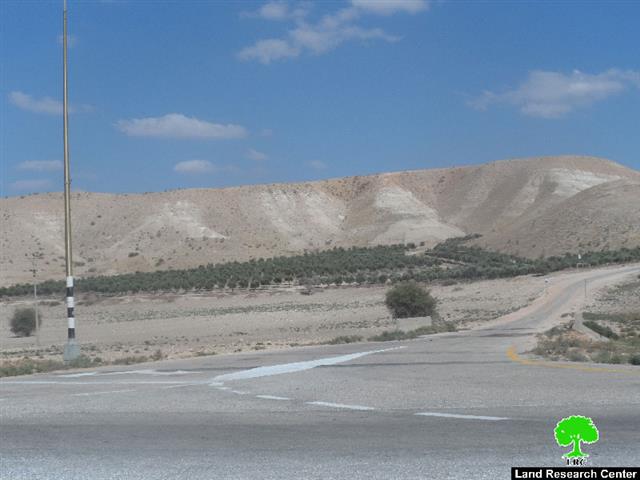Violation: expanding two Israeli colonies
Location: Wadi al-Maleh/ Tubas governorate
Perpetrators: the mass of colonies in the Palestinian Jordan Valley(al-Ghoor)
Victims: residents of al-Ghoor
Details:
The Israeli colonies located amidst of al-Ghoor area have been recently undergoing expansion works represented in annexing new colonial units within the colony's borders and taking over more area in the colony's periphery for the sake of adjoining them to its borders. The newly expropriated lands have been used by colonists in cultivation and plantation.
It should be marked that the ongoing colonial activities are carried out secretively and in synchronization with several military activities, which aim at displacing indigenous from the land and loot the natural resources of the area.
Expansion works on Maskiyyot:
It should be mentioned that during 2014, the colony of Maskiyyot witnessed a notable activity at the level of agricultural land ravaging and constructing new colonial houses.
So far, there is no total sum of the newly added houses since the colony is located on top of hill but seemingly, the expansion is intense in the southeast part of the colony on an area more than 30 dunum. This is seen through the activity of the bulldozers and machineries in the location.
Photos 1-3: Maskiyyot undergoes expansion at the expense of Palestinian lands
It is indicated that Israel Ministry of Housing announced, on February 2014, a tender to construct 35 residential unit within a series of tenders for several colonies spread over the West Bank.
The colony of Maskiyyot was established in 2002 on a previous military location, which was founded in the seventies as means to control the area and monitor the Jordanian borders since the area of Wadi al-Maleh overlooks the mountains of Jordan. By 2002, the camp was evicted and a number of sectarian students resided in the place.
After Israel withdrew from Gaza in 2005, tens of colonists were moved from Shirat Hiyam and Gosh Qteif colonies to Maskiyyot where they lived in temporary houses "caravans". By 2007, caravans were substituted by residential houses.
Lands takeover in Rotem periphery:
Recently, Rotem colonists have been active fencing new areas from the western side of the colony's periphery. This activity was intense in expropriating not less than 10 dunums in the area known as Khalit Hamad that is planted with olive seedlings. Those 10 dunums were added to another 9 dunums confiscated in 2011 despite being classified as an endowment for the Catholic church. Other parts of the taken lands belong to farmers from the area of Ein al-Baeda.
Photos 4-6: Rotem undergoes expansion at the expense of the Palestinian ghoor
Despite the legality of the submitted papers by the owners of expropriated lands in 2013, the Israeli courts have been stalling to take a decision to evict colonists from the lands. On the contrary, colonist went on confiscating more lands besides the already taken ones in 2009.
The colony of Rotem was established in 1984 on the eastern mountains of al-Maleh area that overlooks Jordan and al-Shri'a. It used to be a military base for the Israeli occupation, which changed into a agricultural colony located on more than 80 dunums. Despite that the colony does not have a huge population, yet its residents have higher privileges and services than other Israelis in other places. This is represented in agricultural lands, housing and the facility in marketing agricultural products.
Prepared by
The Land Research Center
LRC




















